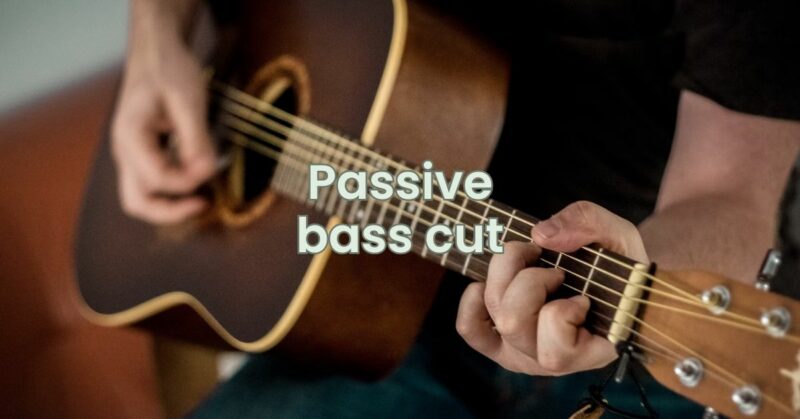Passive bass cut is a technique used to reduce the amount of bass frequencies in a guitar signal. It is done by placing a capacitor in series with the pickup. The capacitor acts as a filter, blocking the bass frequencies from passing through.
The value of the capacitor will determine the frequency at which the bass frequencies are cut. A smaller capacitor will cut the bass frequencies at a higher frequency, while a larger capacitor will cut the bass frequencies at a lower frequency.
Passive bass cut is a popular modification for guitars that are used for genres that require a brighter sound, such as rock and country. It can also be used to reduce the muddiness of a guitar sound.
Here are some of the benefits of using passive bass cut:
- Reduces bass: Passive bass cut can be used to reduce the amount of bass in the sound, which can create a brighter, more jangly sound.
- Reduces muddiness: Passive bass cut can also be used to reduce the muddiness of a guitar sound. This is because it can reduce the amount of low-end frequencies that can cause the sound to be muddy.
- Easy to install: Passive bass cut is a relatively easy modification to make to a guitar. It can be done by soldering a capacitor in series with the pickup.
Here are some of the drawbacks of using passive bass cut:
- Reduces low end: Passive bass cut can reduce the amount of low end in the sound, which can be a problem for genres that require a lot of bass, such as blues and jazz.
- Not as versatile as active bass cut: Passive bass cut is not as versatile as active bass cut. Active bass cut allows you to adjust the amount of bass cut, while passive bass cut is a fixed setting.
If you are looking for a way to reduce the amount of bass in your guitar signal, passive bass cut is a simple and effective solution. However, if you need more control over the amount of bass cut, you may want to consider using active bass cut.
Here are some additional things to note about passive bass cut:
- The value of the capacitor: The value of the capacitor will determine the frequency at which the bass frequencies are cut. A smaller capacitor will cut the bass frequencies at a higher frequency, while a larger capacitor will cut the bass frequencies at a lower frequency. The value of the capacitor is typically measured in microfarads (μF).
- The type of pickup: The type of pickup will also affect the way that the capacitor affects the tone. Single-coil pickups are typically brighter than humbucking pickups, so a capacitor will have a more pronounced effect on the tone of a single-coil pickup.
- The position of the capacitor: The position of the capacitor can also affect the tone. A capacitor that is placed between the pickup and the output jack will affect the entire signal from the pickup. A capacitor that is placed between the pickup and the volume control will only affect the signal when the volume is turned down.
By understanding how passive bass cut works and how it affects the tone of a guitar, you can use it to create a variety of different tones for your playing style.


